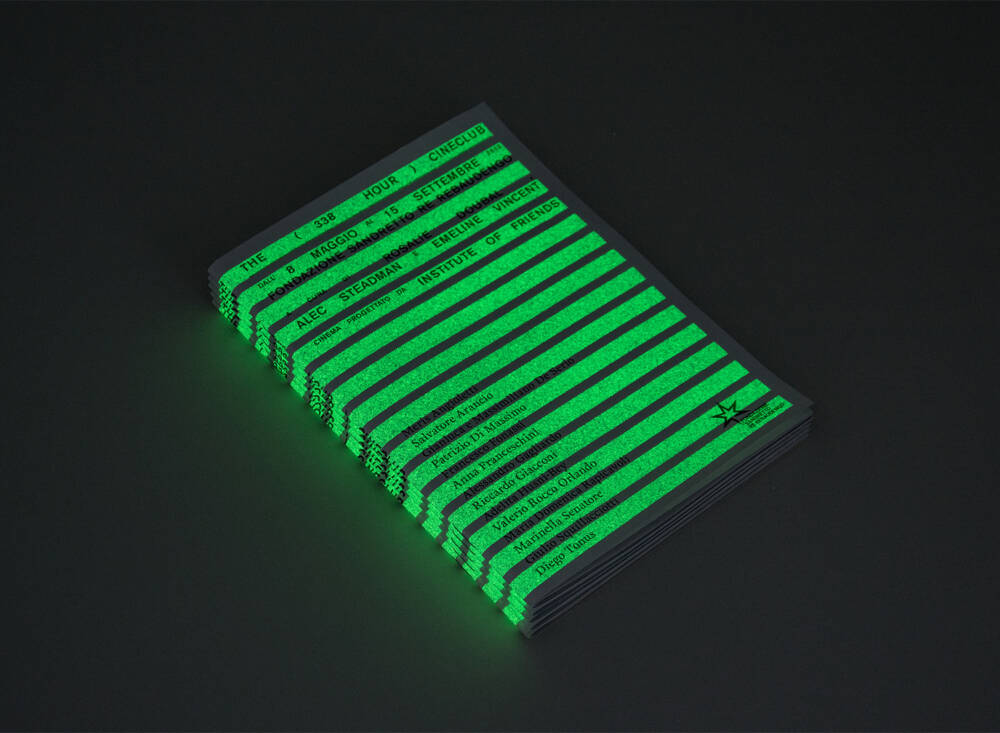“Everything is shit in the beginning”. Sharp beats talk with Studio Mut
Established in 2014 by Martin Kerschbaumer and Thomas Kronbichler, Studio Mut is now one of the most influential and vibrant graphic design studios in Italy. Their design work includes identity, print, editorial and digital design for clients spanning art, culture and commerce. Besides Studio’s workflow, Thomas told us about restoring creative spark, revealing a techno cult poster as a marvelous futuristic cacophony of cultural symbols, and why everything in life, that looks easy is actually hard. We also discovered the secrets of keynote and sketchbooks, and why mood boards and Pinterest are fucked.
Studio Mut will speak at the Forward Festival Vienna in October. Next to them, you will be able to hear Creatives like Deutsche & Japaner, Foxdog Studios, Wang & Söderström and many more.
Tell us about projects which kick-started your career. How has your approach to your work changed over time?
Well, I think in the beginning you make every project that you get offered and you try to do your best. The first projects we did as a studio were not that great, but all gets easier with time. We did pretty much everything that came into the door. That’s when we started to realize that the client is one of the most important aspects of every design, the client makes or breaks the project, pushes it forward and promotes it. The main problem is to design something intelligent, brand new and in the right context. Sometimes it’s overshadowed by another issue when your product doesn’t land in the right hands of the right people, shops, etc. So, one thing that we learned is that no matter what the project is, whether small or big, it has to be successful to get us new clients and keep us evolving. It’s very important to make touching and meaningful things that engage with a lot of people. But you can only do that if the projects that you did are successful because otherwise, you’re not getting those projects.
Yeah, the long story short, in the beginning everything’s shit. And even now when we start designing, sometimes it doesn’t look or feel good. But we’ve got fast in understanding how things work. I think people can learn.
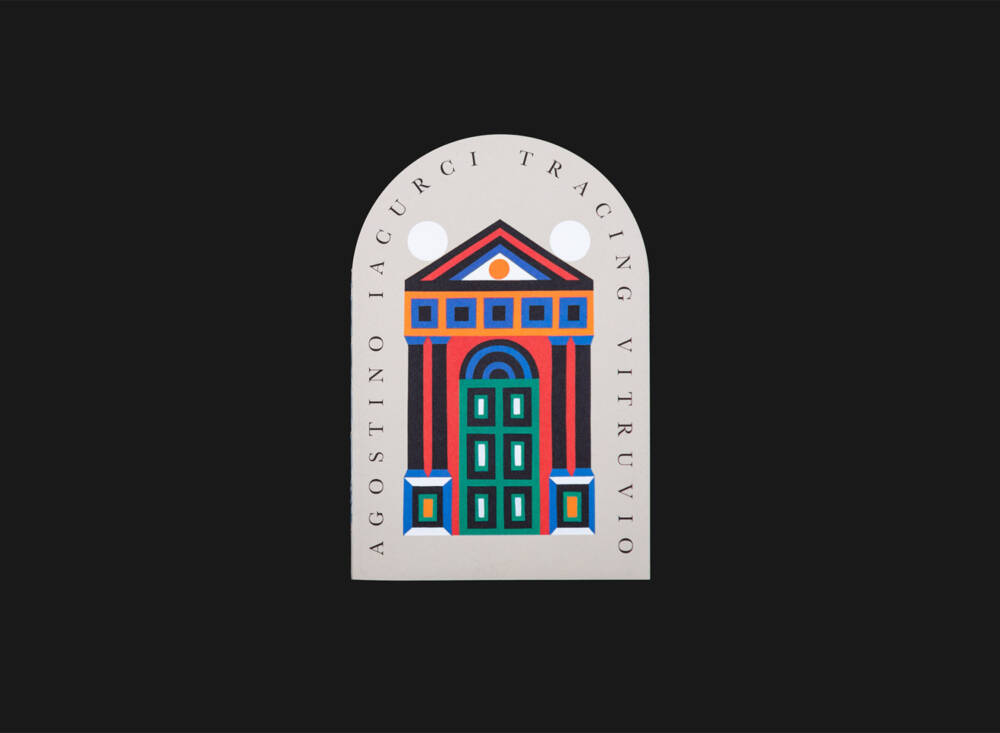
Was there a boom or was it gradual?
I think this boom doesn’t exist. We’ve been working for more than 10 years now, often on ten to fifteen projects at the same time. And some of these things get a life of their own, like Trieste Summer Festival 2015, which we still actually do every year. It’s not that easy because it was so minimal in its design and every year we have to work against the urge to make it more complex…
The studio is an all-rounder: You cover a lot of fields from graphic to web design or art direction, spanning art, culture and commerce. Do you think it is necessary to have a bigger picture in mind and know various disciplines of the design field to create something great?
I think it gets very boring if you’re not trying to push and challenge yourself. Me and Martin Kerschbaumer studied product and communication design. So we didn’t study graphic design and that’s pretty much visible in everything that we do. We realized that graphic design is not interesting enough, so we’re always trying to find new playgrounds. Sometimes it’s interesting to do something with photography or to work with architects, with a completely different view of communication. We try not to do advertisements because that’s a crazy world without morals. We’re not doing PR and social media, because we’re not marketing people. We create the objects and communication.
If you look at the history of graphic design, it’s pretty much a story of rapid evolution. This field has been expanding and changing, and some technologies have completely gone in the last couple of years. If you’re not trying out everything, you’re missing out.

So how many people do you have in a team?
We are only five people, but we’re all designers and there’s nobody who does project management. We’re all doing everything from picking up the phone and talking to the clients and making coffee. That was an approach that we learned and copy-pasted by working at Fons Hickmann. I find it strange if there is one person who talks to the client, and then another one who designs things, in this case, everything gets lost and turns into shit. You’ll say this is how all the agencies work, but this is maniac. But the problem with our approach is that you have to find a lot of really talented people, who want to do everything and that’s not easy.
Which are the main hurdles when running a creative studio?
Our approach is to make things with a lot of emotions. You give a lot of personality to the project and I guess sometimes it’s really hard to get feedback on that, right? Because there is so much of your passion in there. And that of course is a reason why people are working with us, but then, on the other side, it gets personal really fast. I think it will be much easier if we had a school of thought like in the Bauhaus or modernist movements, that is much more objective, when you can say it’s not you designing this, it’s just you applying philosophy to the work. So if the process includes a lot of personal, it’s really hard to explain it to a client.
We’re running a studio for a long time now and it doesn’t get easier. In the beginning, you have a lot of youth and strength, and then, after five years, you ask yourself: Wow, is this running?! Is this a miracle what I’m doing for the rest of my life? You have to find and always refind your passion. It’s a marathon, and if you lose your spark you get slow, therefore it gets tedious and harder. That’s the worst thing. It’s really hard to float. Sometimes things look so easy that a lot of people think that you’re just dropping them, but in fact, it’s really hard. We do fifty alterations of one poster to get the one that looks super effortless and easy. Everything in life, that looks easy is hard.
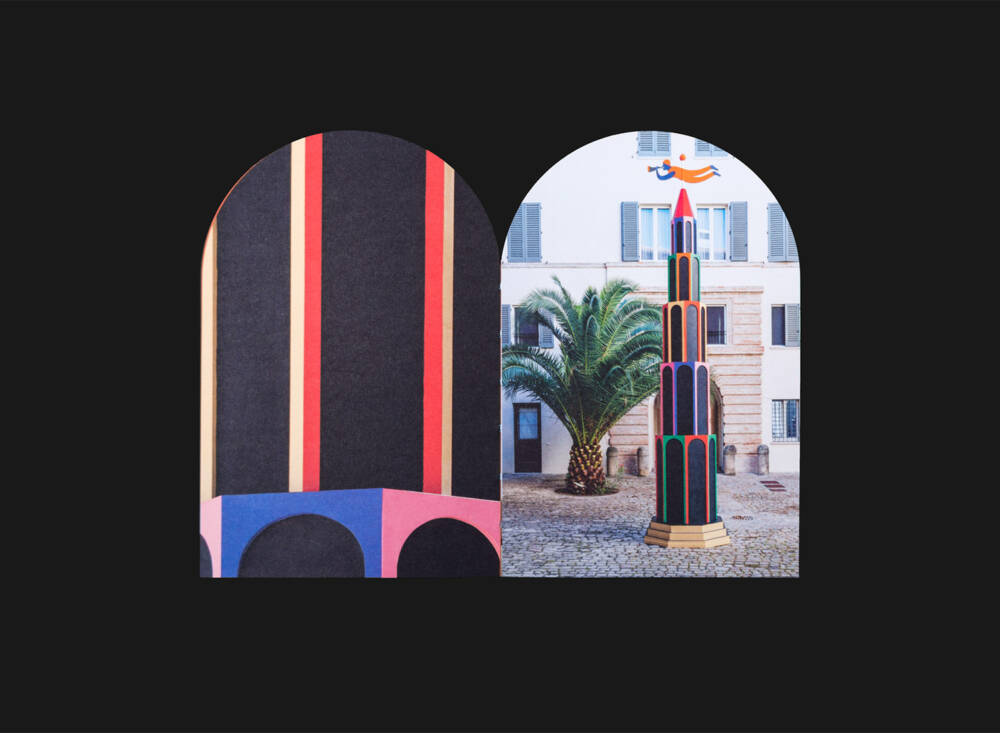
You recently made a design of a reader on techno and globalization Exhibition for Museum of Contemporary Art in Bolzano. Can you tell us about the concept behind the project?
It was very interesting for us because we normally come from the idea of simplification, making the design as simple as possible. And in this case, it was different because the techno is not a culture of making things simpler. It’s a culture of making self-referential, mixed and stamped things. It’s kind of a secret cult with certain meaning symbols. As designers, we tried to understand how this all works. So we started communicating and making the techno-related mood boards with the director and the curators of the museum. We normally don’t do mood boards because they are just copy-boards, but techno is just such a copy-paste culture, that it makes sense.
We didn’t copy any symbols or typefaces, we created everything from scratch. So what we had was a big illustrative file of thirty to fifty little ideas, symbols and small images. And then for the series of three to five posters we’ve just compressed these things onto the format, and everything that is there creates this loud, strange and deranged futuristic cacophony of different symbols.
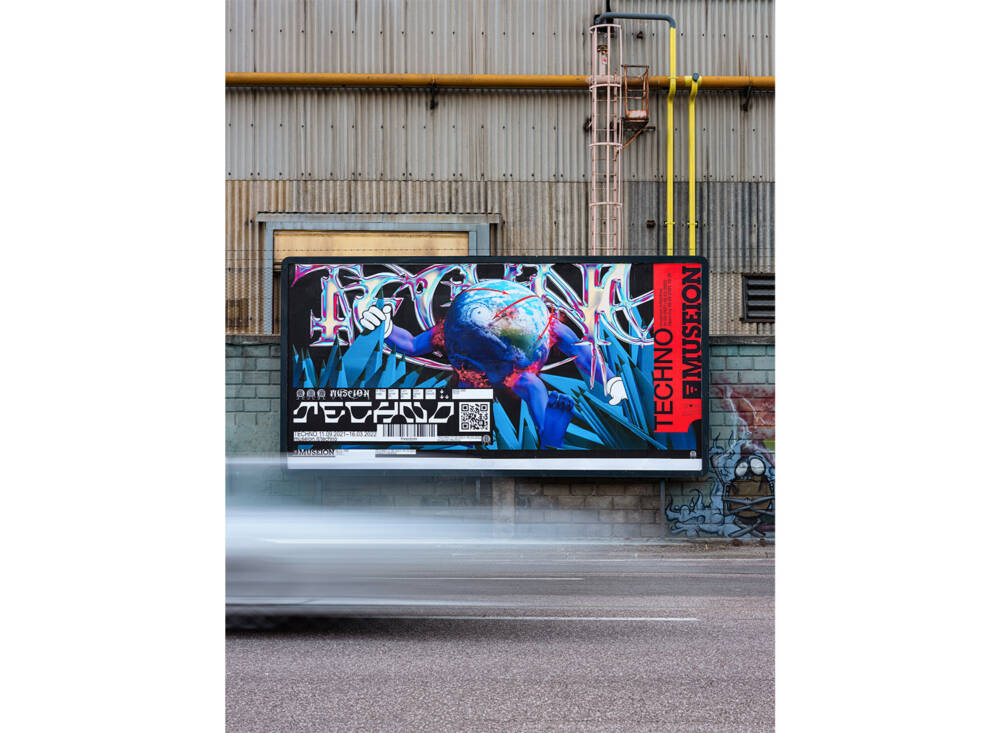
Does personal commitment and interest in the clients’ concept play a big role in the choice of projects you work with? What is that “hooks” you the most?
We want to try out new things, so that is what’s exciting. Also, we want to touch a lot of people and make our designs seen. So if I choose between a super artsy self-publishing book where I can do whatever I want or I get a commission to do something, I would always go for the popular thing because I think it’s just more friction and excitement there, and I can bring so much more into the world. I would also choose the more difficult thing, like making things large-scale, for a lot of people. Not a very noble thing to do for me is to make the world our worst place by working for Facebook or some tobacco and alcohol company, but it depends, I guess.

Can you tell us more about your workflow and sources of inspiration?
It depends, but when we start a project, we have this folder called “Madness”, where you can do whatever fuck you want. We often start with a sort of poster, where we try to find out the right voice and emotion. And when we find something that is interesting, we are going into the layout or the presentation of the idea for our clients. The idea is always only one, so we never make more than one version. We always want to have the big brushstrokes of feedback from the client. We want to talk about everything: is it the right feeling? Is it the right idea? How can we make it better? We also have to teach our clients to talk to us in the right way because, otherwise, you can’t succeed. 80% of our clients are up for that, other 20% are not, so you have to try to find a new idea or just stop the project.
Then what about inspiration?
We have a lot of books. I’m using them to show the interns or the clients the idea I want to implement in a project. And we’re never on Pinterest. I want to be quoted for saying “Fuck Pinterest!”. There is no context, so it’s not possible to get the right idea. It’s easier on Instagram, but we are not as active there as we used to, because it turns into shit. It’s a lot to be learned from the history of graphic design. If you look at all things from the 1950s, 60s or 70s, you always see some nuggets in that idea that somebody had in mind, which is really inspiring.
Sometimes, one of the most inspiring feelings of all is when you see something that somebody else did and you like: Shit why didn’t I come to this idea first? And then it’s great to understand what can I learn from someone else doing great design, arts, music…What can I take from this? What is that thing that makes it great? I think this is the biggest inspiration- seeing others doing great things and trying to understand what makes it so.
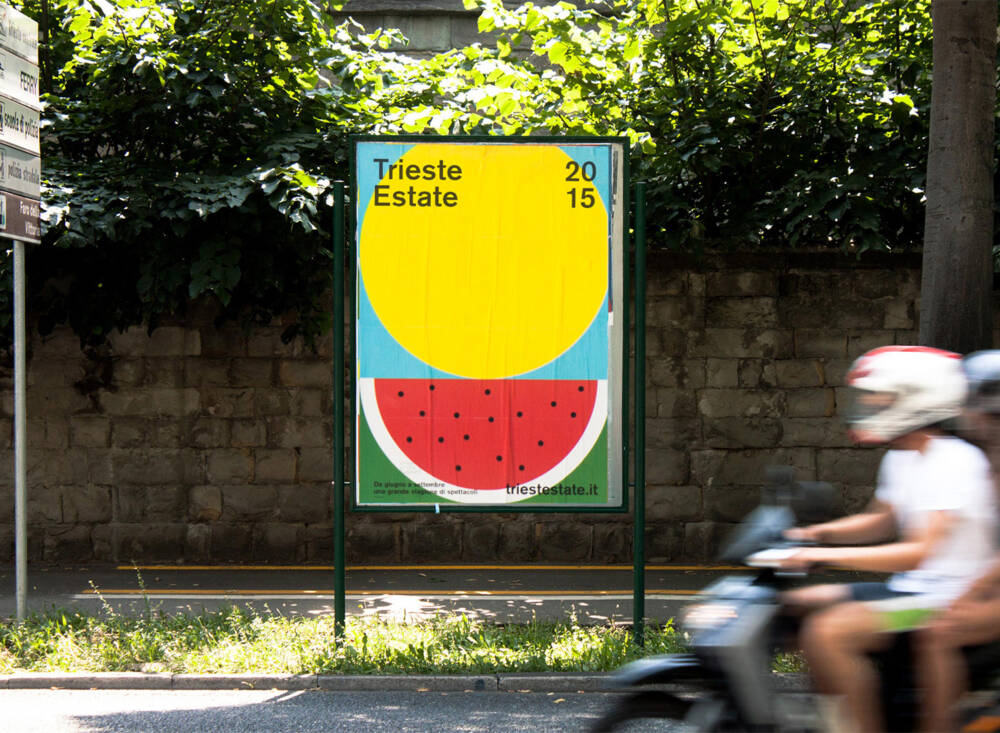
Do you start the creative process with sketches or directly on the screen? How important is the software you use?
Always on a screen. As a cook, how important are the spatula and the knife in a mix with your idea? Same with the software, right? Software is just one piece with what we need to do our things. But the big knife is made for doing certain things and a small one for others.
We love and hate InDesign, it’s a place where everything just comes together. It’s like an Organ in a church, a big instrument which is kind of hard to play. You have to know how to pull and punch the register. And you have to play with your feet and hand and then with two or three different pianos. But it’s cool because you can pretty much play everything. We also hate it because it feels old and it doesn’t include all of the beautiful things that we want to do, we can’t work together at the same time on a file. We hate illustrator, but we use it a lot. We try out affinity publisher and Figma which are interesting. We dislike Adobe because it just got too big and it’s not serving the community, it’s just serving itself and its shareholders I guess. So, we are trying to get rid of Adobe, but it’s not working. I love Final Cut Pro, where you can do movies, animation and shit, it’s crazy.
I love keynotes, It’s beautiful. I actually bonded over a Keynote with one of the biggest stars of graphic design April Graiman. She’s like an idol to me who loves Keynote as well. April is one of the pioneers of computer graphics in the late 80s when everyone was drawing on paper. I also really love the camera on my phone, it’s a great tool for design.

Creative work is known to be accompanied by a lot of questioning and doubts. Do you think those doubts are necessary to keep on pushing forward?
No, I don’t think that doubts are a good way of moving forward. Design is the art of saying YES, not of saying maybe and not of saying NO. So the design has to be positive. Arts can be sarcastic and bleak, but design can never be. Design is about the definition and things that get us to the next level in the future. It’s okay to doubt yourself from time to time, it’s not a feature that has to be groomed. I’m personally just a very positive person and don’t care about the naysayers, I just have to create new things. So doubts are not a good model of working for me.
Even though you have collaborated with a huge number of credible clients and cultural platforms, are there any projects you still have been dreaming to realize?
I want to do the design for the Olympic Games, I believe it’s going to be fun and can touch a lot of people. It would be interesting to do a lot more things for music festivals and single artists who make popular music. And, yeah, the only thing that I’m really positive that I don’t want to do is to make another zine about graphic design or another typeface.
